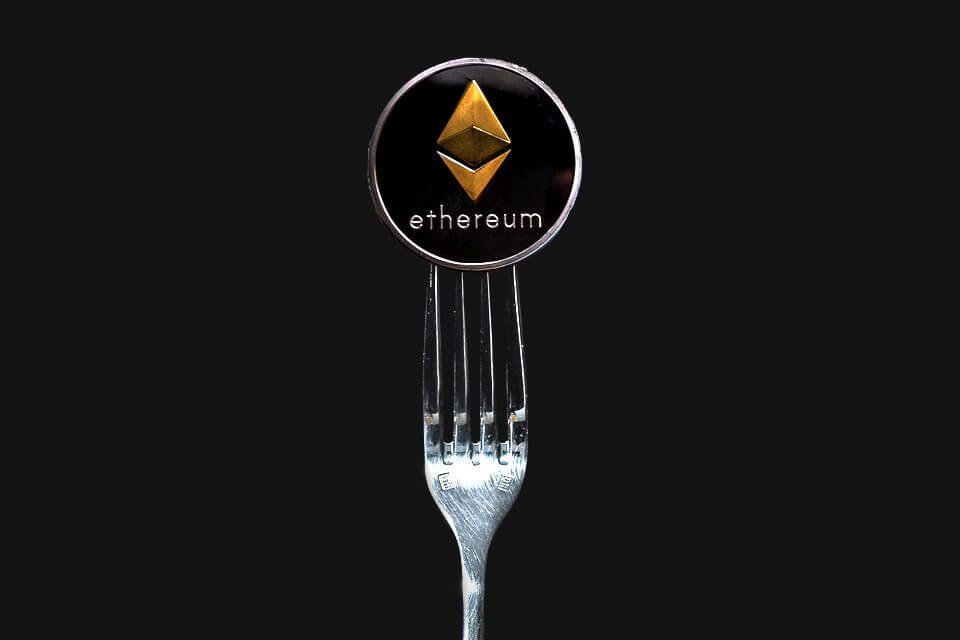

In recent years, there have been numerous forks on a variety of different cryptocurrencies. An Ethereum fork is one of the most famous. Whilst cryptocurrencies were less popular before the bull run of 2017, a controversial hard fork took place creating Ethereum Classic. This is the history of Ethereum forks.
There are two different versions of forks in cryptocurrencies. A hard fork and a soft fork.
A hard fork is a more substantial issue. When a hard fork takes place there can be a split in a blockchain if there isn’t consensus. The hard fork will cause all older versions of the blockchain to be invalid. However, people can still choose to run the older software if they do not agree with the hard fork decision, i.e. the hard fork didn’t achieve consensus amongst the community and miners.
This can lead to the creation of a new cryptocurrency, as happened when Ethereum hard forked and Ethereum Classic was created.
Hard forks can also be used to upgrade the software on a blockchain. If this upgrade has the consensus of the community and the miners then there will be no split on the blockhain. Hard forks are generally avoided though as they can often be risky and, without consensus, can cause a plethora of issues.
Soft forks are more subtle and still allow older versions of the blockchain to work with the new one.
The Decentralised Autonomous Organisation was a feather in the cap of a young Ethereum. Many of the early investors of Ethereum lined up to provide further capital to the DAO. The idea behind the project was that the DAO would disperse funds to various different Ethereum projects.
There was no leader behind the DAO or a board of directors. The hype behind the project was very much real though. During the crowdfunding stage, 14% of all the Ethereum tokens in circulation were held up in it from more than 11,000 investors.
However, when the project went live things turned sour. Despite some people highlighting what they suspected to be flaws in the underlying code of the DAO, the reaction from the community was not quick enough and 3.6 million ETH was stolen. This was around a third of all of the Ethereum held by the project.
This event led to some deep soul searching within the community. Should Ethereum hard-fork and reverse the transaction, thereby giving money back to the people who lost but at the same time reneging on the supposed blockchain immutability? Or should they continue to plow on as normal?
Eventually the decision was made and Ethereum hard-forked. However, this wasn’t without consensus and many continued to support the old chain which is now known as Ethereum Classic.
The hard fork of Ethereum, like many other hard forks to follow, is still a controversial topic to some. Some Bitcoiners have accused Buterin of bailing out his friends and colleagues with the hard fork, a claim Buterin strongly denies.
There have been other forks on the Ethereum network that have achieved consensus and are akin to an upgrade. One such fork was Constantinople which took place after some delay. Constantinople lowered the block reward and made some further improvements under the hood. The upgrade was completed via a hard fork but there was no split in consensus.
In 2017, there was another hard fork called Byzantium that made upgrades to the Ethereum network via a hard-fork with consensus. The key for these upgrades is consensus within the community and miners to ensure that the hard fork goes smoothly, without any splits.
Ethereum will continue to hard-fork into the future but it is less likely that there will be a split as was the case with the DAO event. With Ethereum being much more popular nowadays, the risks of poor code entering the system are much greater. One would hope that this means before any upgrades go live on the system they have been fully tested and are known to work.
Ethereum still has ambitious plans for the future and forking is going to be their way to get there.
Denver, Colorado, 24th February 2025, Chainwire
Denver, Colorado, 20th February 2025, Chainwire
Washington, D.C., 18th February 2025, Chainwire
Dubai, UAE, 27th January 2025, Chainwire
Those who enter the market at this time may be surprised to hear that Bitcoin…
George Town, Grand Cayman, 22nd November 2024, Chainwire